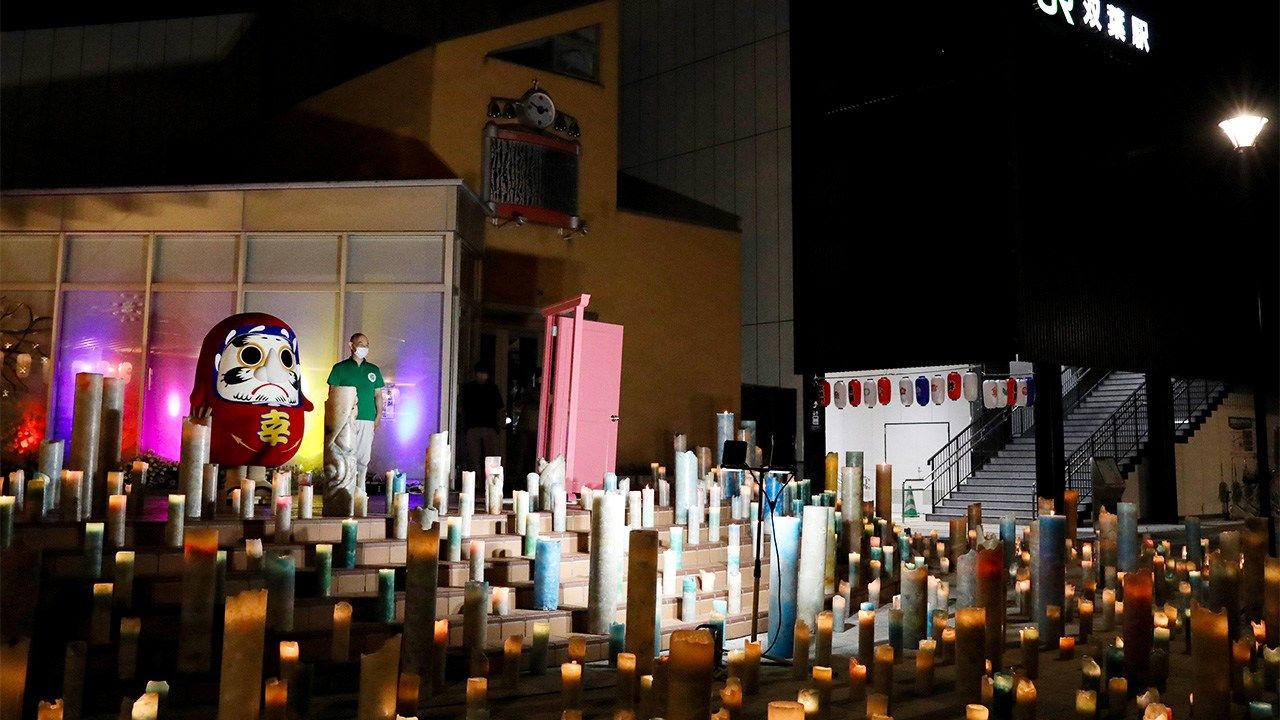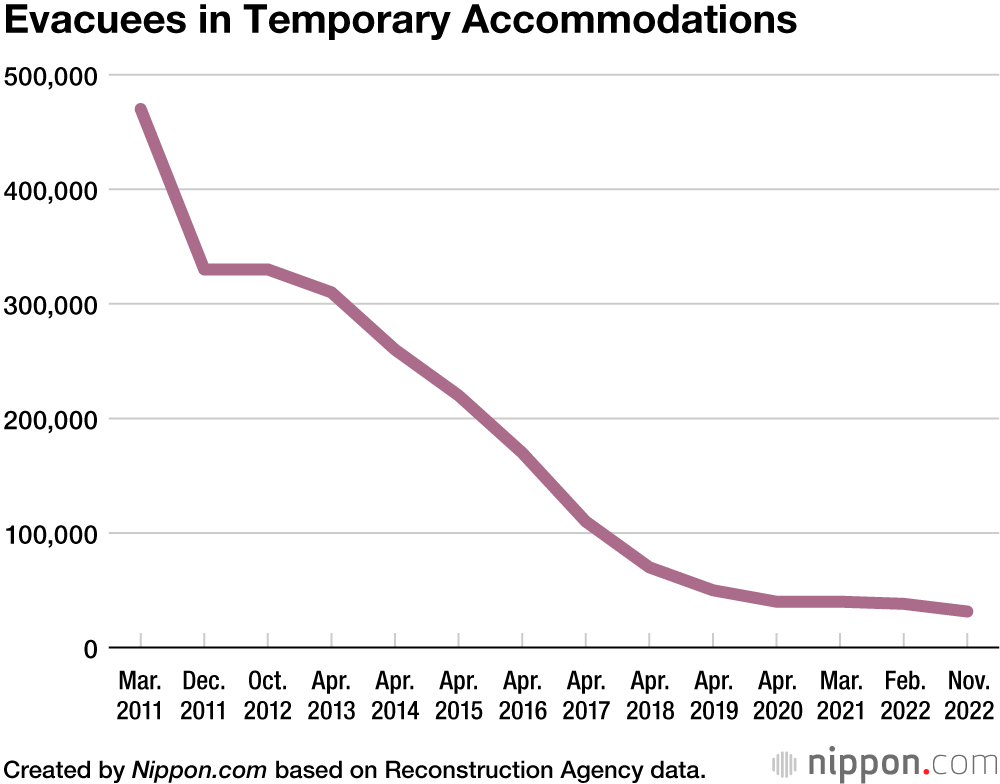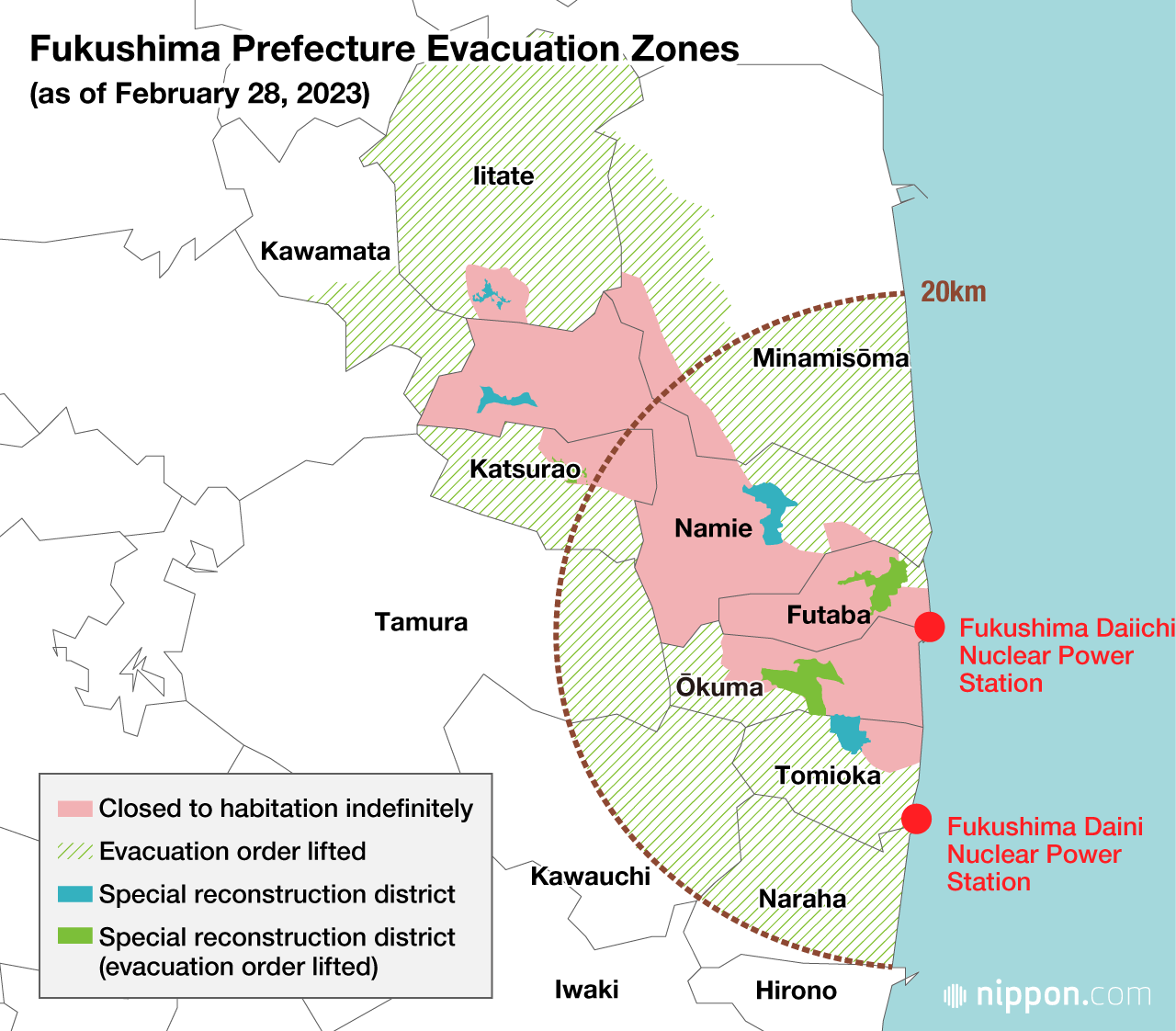
The State of Recovery in Tōhoku 12 Years after 3/11
Society Disaster- English
- 日本語
- 简体字
- 繁體字
- Français
- Español
- العربية
- Русский
Twelve Years On
The Great East Japan Earthquake struck off Tōhoku’s Sanriku coast on March 11, 2011, triggering a devastating triple disaster. Shaking from the 9.0-magnitude temblor registered 7 on the Japanese seismic intensity scale in Kurihara in northern Miyagi Prefecture and lower to upper 6 in areas spanning eight other prefectures. The quake triggered a massive tsunami that slammed into communities along Japan’s northeast Pacific coast, topping 9.3 meters in Sōma in Fukushima Prefecture, 8.6 meters in Ishinomaki in Miyagi, and 8.5 meters in Miyako in Iwate Prefecture. The tidal wave also touched off a triple meltdown at the Fukushima Daiichi Nuclear Power Station.
The human toll remains the most moving reminder of the devastation of the disaster. According to Reconstruction Agency data, the death count from 3/11 stands at 19,759, including disaster-related fatalities from suicide and illness, with 2,553 individuals still unaccounted for. Over 120,000 homes were also destroyed. Although evacuee numbers have steadily declined in the 12 years since the catastrophe, as of November 2022, 31,438 people remain in temporary accommodations in Tōhoku, Kantō, and other regions. The majority, some 21,000 evacuees, are from Fukushima Prefecture, centering on communities near the crippled Daiichi facility.
Progress of Reconstruction
The bulk of the planned public housing projects for disaster victims, some 30,000 units of public housing and 18,000 elevated plots for private homes, are complete. Work on transportation infrastructure is also largely finished, including the 359-kilometer Sanriku Expressway, which fully opened on December 18, 2021, linking Sendai in Miyagi with Hachinohe in Aomori Prefecture. Train service on the last disaster-hit section of the JR Jōban Line between Tomioka Station and Namie Station in Fukushima resumed in March 2020.
Nearly all farmland and seafood production facilities in tsunami-hit areas of Iwate, Miyagi, and Fukushima have been restored. As of September 2022, the amount of agricultural land available for cultivation stands at 95% of pre-disaster levels, while 98% of seafood production facilities wanting to resume operations have reopened as of December 2021.
Fukushima’s fisheries have made strides in restoring reputations damaged by safety concerns of catches and restrictions on where boats can operate. Trial fishing centering on bottom trawling along the coast was carried out until March 2021, and as catches were found to be safe, local fisheries are now preparing to increase output.
Restricted Zones Open
Decontamination work in communities near Fukushima Daiichi has progressed, although portions of six municipalities remain closed to habitation. Decommissioning of the plant’s reactors is moving forward slowly.
The government has ramped up decontamination and other reconstruction projects in special districts inside zones that are closed to habitation indefinitely, and in June 2022 it began allowing evacuees to return permanently. Authorities have relaxed restrictions in areas of Katsurao, Ōkuma, and Futaba, including allowing residents to stay overnight in their homes, with evacuation orders in Namie, Tomioka, and Iitate expected to be lifted sometime this year. However, only a handful of people have expressed interest in moving back.
Treated Water to be Discharged
The Japanese government on April 13, 2021, announced it intends to discharge treated, low-level radioactive water from Fukushima Daiichi into the ocean and has since set the period for starting the release of water around spring or summer of this year. The plan has drawn sharp criticism from the local fishing industry and others.
Lawsuits Continue to Play Out
In 2022, courts passed down a string of rulings in several of the some 30 class-action suits filed over the meltdown at the Fukushima Daiichi plant. In November, the government moved to expand the scope of compensation for damage linked to the nuclear accident after the Supreme Court finalized several rulings that ordered Tokyo Electric Power Company to pay more in recompense to victims. In late January of this year, TEPCO announced it would provide up to ¥2.8 million per person in damages.
On January 18 of this year, the Tokyo High Court upheld an earlier not-guilty ruling for former TEPCO Chairman Katsumata Tsunehisa and two other executives over their culpability in the nuclear catastrophe, with the judge in the case saying that the trio could not have foreseen the possibility that a tsunami would hit the plant. This contradicted a separate ruling in July 2022 in a case brought by TEPCO shareholders in which a lower court concluded that the accident could have been avoided and ordered the three executives and another top official at the company to pay ¥13 billion in damages.
(Originally published in Japanese. Banner photo: People gather in the early hours of August 30, 2022, at an event outside of JR Futaba Station to mark the lifting of evacuation orders. © Jiji.)

